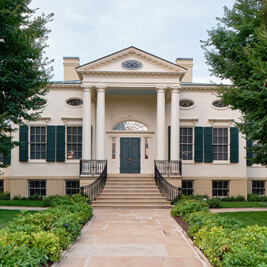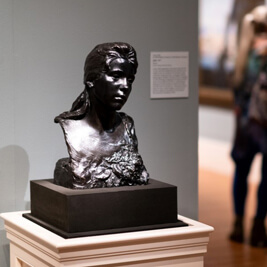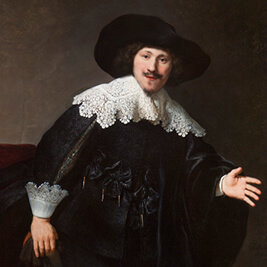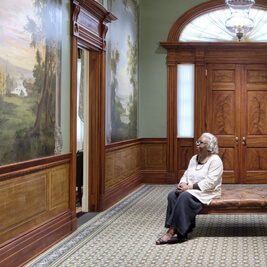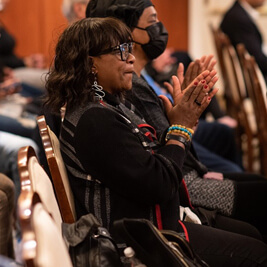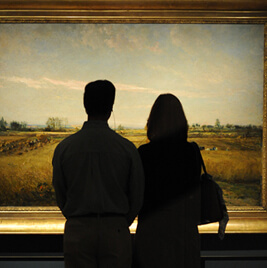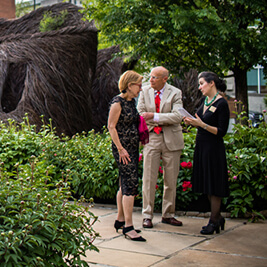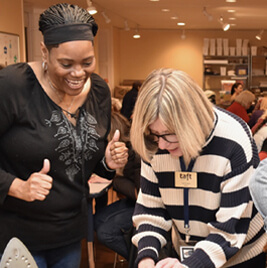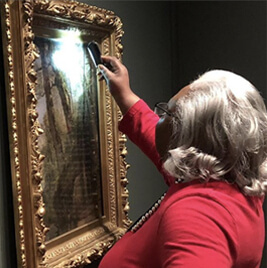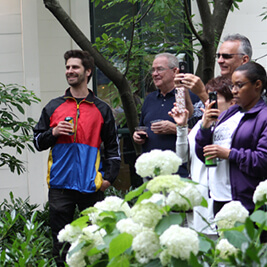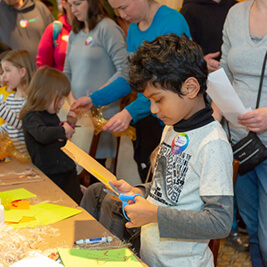- Do + See
- Dine + Host
- Give + Join
- Educate + Learn
Hiram Powers and Cincinnati’s Western Museum
“Inventor, wax-figure maker, and general mechanical contriver”
by Tamera Lenz Muente, Curator
Visitors to the Taft Museum of Art can see three marble portrait busts sculpted in the early 1870s by Hiram Powers (1805–1873), who was at that time America’s most famous sculptor. In his studio in Florence, Italy, Powers created dignified, accurate likenesses of wealthy subjects including Alphonso Taft, David Sinton, and Anna Sinton Taft. Who would guess that Powers had created the nation’s most notorious shock-and-horror show at Cincinnati’s Western Museum four decades earlier?
Beginnings of the Western Museum in Cincinnati
Dr. Daniel Drake established the Western Museum as a serious scientific institution in 1820, which is the same year that Martin Baum built the home that would later become the Taft Museum of Art. At the museum’s opening, Drake declared, “Let the architects of our national greatness conform to the dictates of science.” A poem to honor the museum’s second anniversary proclaimed:
"Great Genius of Science! we ask thy direction
In guiding our footsteps in every pursuit:
Man is raised to an angel beneath thy protection,
And, without it, is sunk to a savage or brute."
Despite its lofty ideals, the museum encountered financial distress by 1823, and its founders transferred ownership to the curator, Joseph Dorfeuille, a man of science with a mysterious background. Dorfeuille catered to the public’s fascination with the sensational and the macabre to turn the museum into a commercial success. Although he continued the museum’s science lectures and kept the displays of natural specimens, fossils, and antiquities, he added dubious objects, including a “mermaid” and the supposed preserved head of a local murderer.
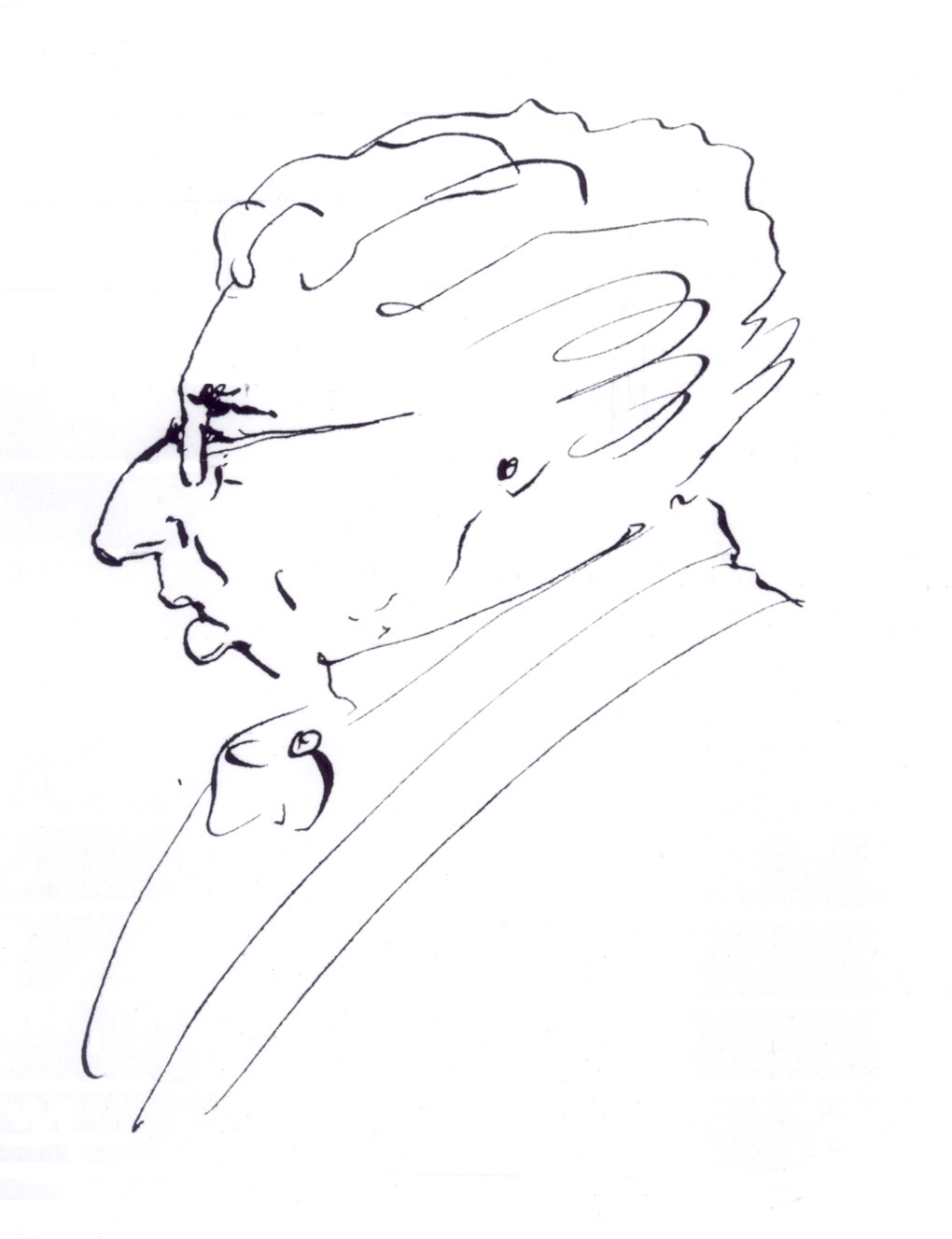
Hiram Powers, Joseph Dorfeuille, about 1828, reproduction of original drawing in ink on paper. Collection of Hope College, Van Wylen Library, Holland, Michigan.
The Young Hiram Powers
The year before the Western Museum opened, 14-year-old Hiram Powers moved from Vermont with his parents and siblings to a farm outside Cincinnati. Soon, malaria claimed his father and left Powers too weak for farm work. Powers’s older brother, who ran a newspaper in Cincinnati, found him a job managing a hotel reading room, where, for fun, Powers made cut-out portraits of people from old papers. He next worked for a grocer, passing his downtime by carving butter into grotesque creatures to surprise customers who opened the butter barrels.
Powers soon met organ- and clockmaker Luman Watson, who hired the young man to polish organ stops and collect debts. Watson noticed Powers’s innate talent for mechanics and took him into his household. Powers quickly began improving Watson’s machinery, fixing problems his more experienced workers could not. He helped build organs for two museums: Letton’s, and its competitor, the Western Museum. On the side, he began modeling portraits and learning plaster casting.
Meanwhile, Dorfeuille was adding wax figures to the Western Museum’s repertoire. When a shipment of figures from New Orleans arrived damaged, Powers was recommended to repair them. Upon examination, they were so badly broken that the two agreed to cobble the parts into something new. Powers transformed the head of one of the figures into “The King of the Cannibal Islands,” puffing out the cheeks and adding alligator tusks. Two days later, he discovered posters around the city advertising the display of an actual embalmed body of a South Seas cannibal at the Western Museum. Mortified by this falsehood, Powers confronted Dorfeuille. The public never complained, however, and the new addition became quite popular. Powers’s ability to make wax figures that appeared alive led to Dorfeuille hiring him as, in Powers’s words, “inventor, wax-figure maker, and general mechanical contriver.”
“A most extraordinary and imposing group, representing the Infernal Regions”
In 1828, Powers began work on a spectacular display for Dorfeuille: a terrifying interpretation of hell as described in Dante’s Divine Comedy and Milton’s Paradise Lost. Initially, Powers startled spectators by walking through the crowd disguised as a demon, wearing a dark robe and a lobster claw for a nose. He then invented figures that first moved on pulleys; later, he fully automated them. Eventually, thirty figures populated the show, consisting of what an advertisement described as “phantoms, imps, monsters, devils . . . with a variety of human sufferers in every stage of mental and bodily torment.” Visitors could view this chamber of horrors, billed as “the only exhibition of the kind in the United States,” for twenty-five cents.
Many accounts of the Infernal Regions appear in writings from the period. The English author Frances Trollope lived in Cincinnati from 1828 to 1830 and published her observations in her travelogue Domestic Manners of the Americans. She wrote, “Cincinnati has not many lions to boast,” but applauded Dorfeuille’s museum, stating that he had built: “a pandemonium in an upper story of his museum, in which he has congregated all the images of horror that his fertile fancy could devise; dwarfs that by machinery grow into giants before the eyes of the spectator; imps of ebony with eyes of flame; monstrous reptiles devouring youth and beauty; lakes of fire, and mountains of ice. . . . All contribute to make ‘Dorfeuille’s Hell’ one of the most amusing exhibitions imaginable.”
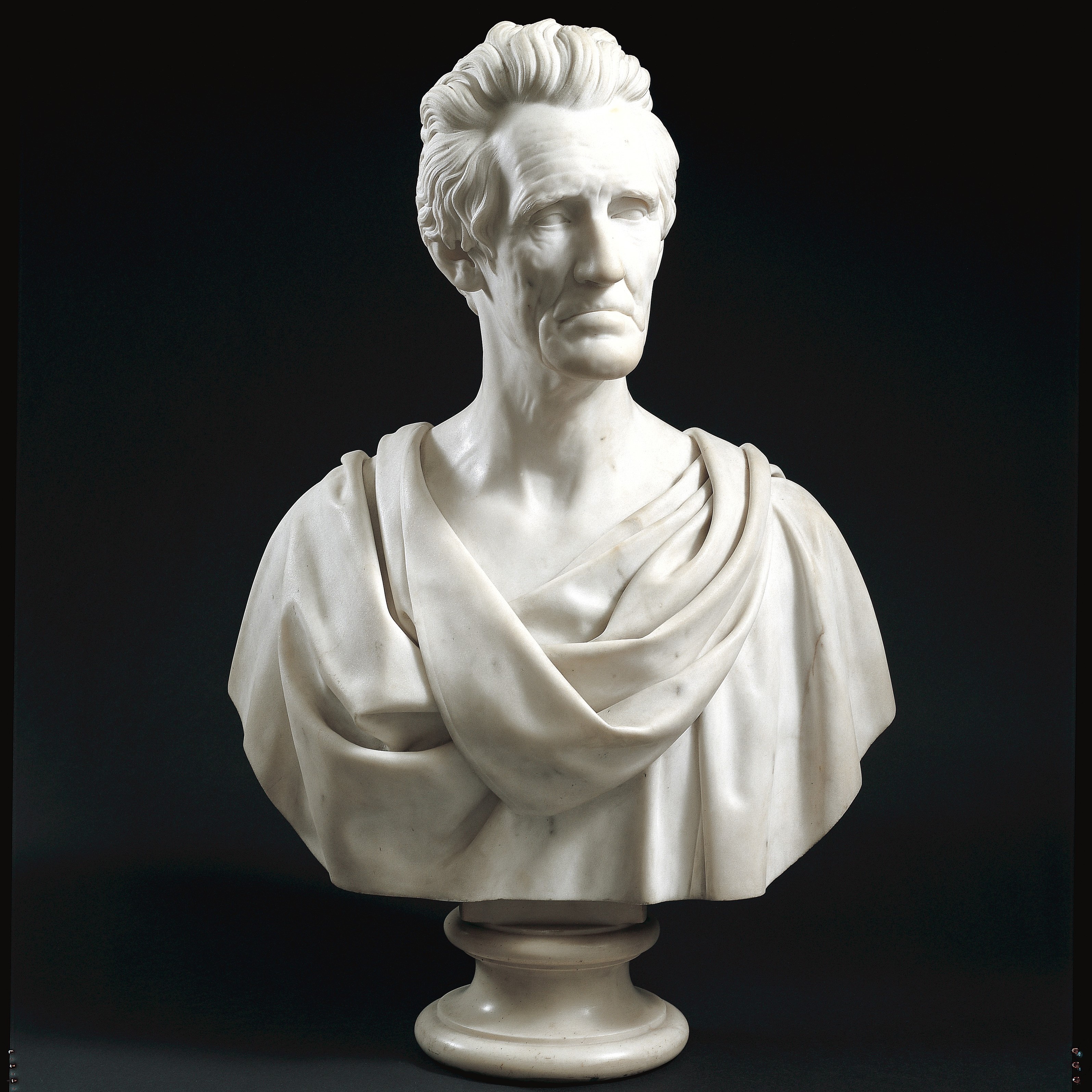
Hiram Powers, Andrew Jackson, modeled 1834–35, carved 1839. Metropolitan Museum of Art, New York
Powers and Dorfeuille Part Ways
Hiram Powers worked at the Western Museum for about seven years. His Infernal Regions became a must-see for locals and visitors to Cincinnati. Dorfeuille had promised Powers a share in the business, but in an interview late in his life, Powers recollected, “He knew I kept no accounts; but he did not know that I reported all the money he gave me to my wife, who did keep our accounts. He tried to cheat me; but I was able to baffle him through her prudence and method.”
Nicholas Longworth (former resident of the house that is now the Taft Museum of Art) saw Powers’s potential and offered financial assistance. In 1834, with Longworth’s help, Powers left Cincinnati to seek portrait commissions in Washington, D.C. There, Powers modeled portraits of President Andrew Jackson, John Quincy Adams, Daniel Webster, and Chief Justice John Marshall. As his career as a respected portrait sculptor took off, Powers vowed to “make truth my model and guide in all my future undertakings,” leaving behind the fantastical creations of his youth.
